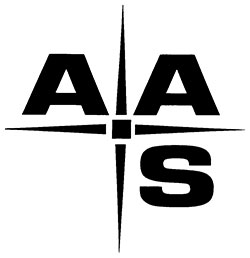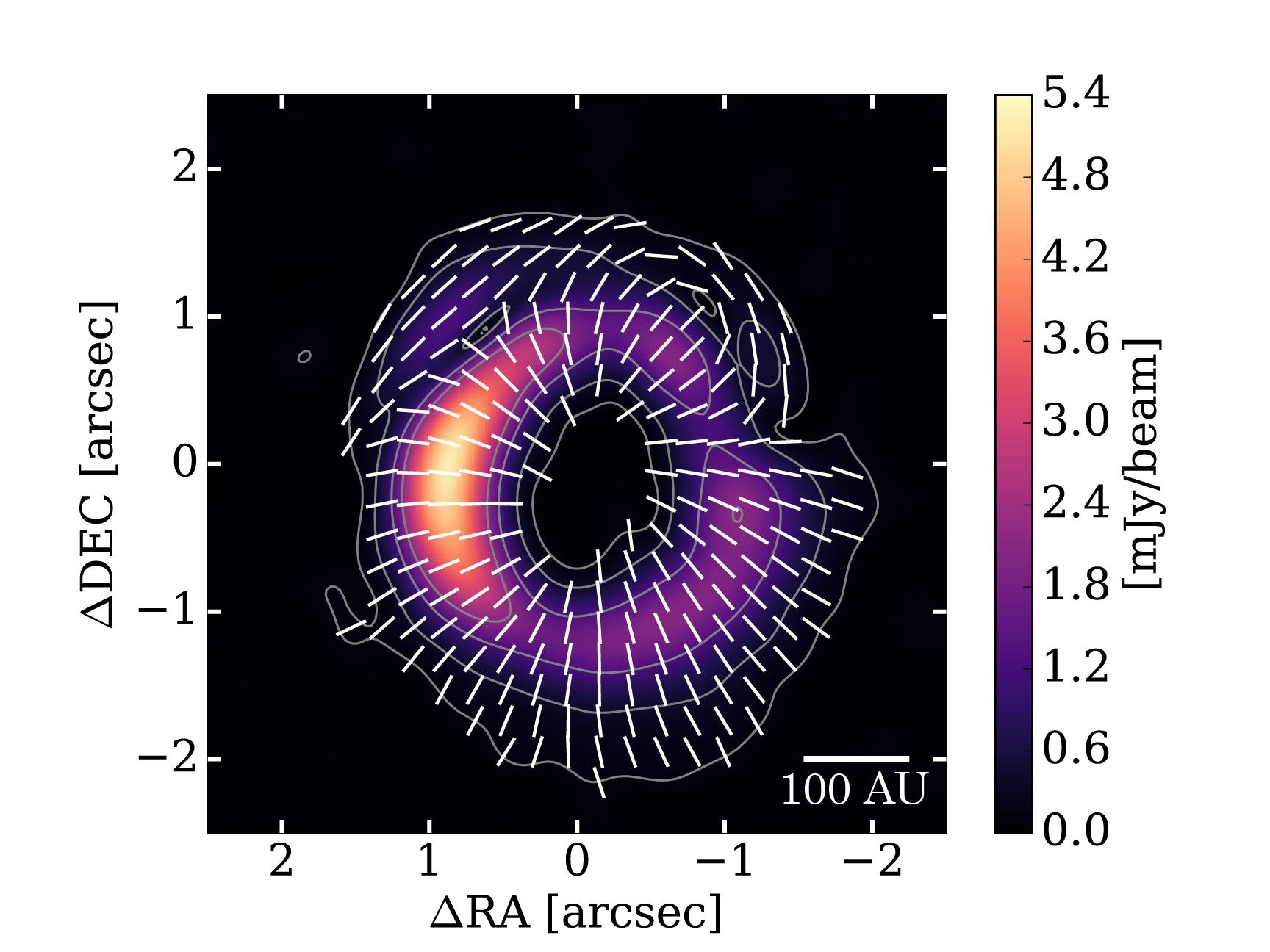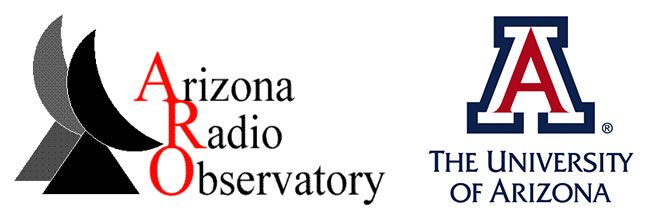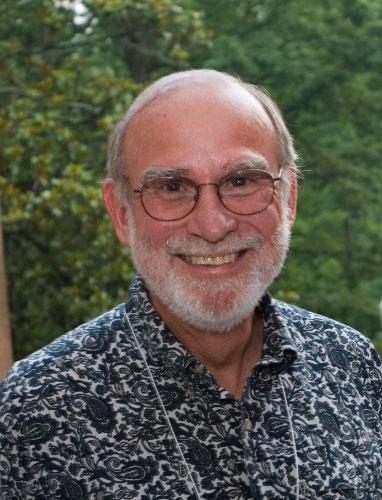NRAO eNews
Volume 9, Issue 11
15 December 2016
NRAO eNews
Volume 9, Issue 11 • 15 December 2016

Upcoming Events

NRAO Town Hall at the AAS Meeting
Jan 6, 2017 | Grapevine, TX

Next Generation VLA Poster Session at the AAS Meeting
Jan 6, 2017 | Grapevine, TX

ALMA Band 1 Science Workshop
Jan 16 - 18, 2017 | Taipei, Taiwan

ALMA Data Reduction Party
Jan 25 - 27, 2017 | Charlottesville, VA

2017 Astrobiology Graduate Conference
Jun 5 - 9, 2017 | Charlottesville, VA

Women in Astronomy IV: The Many Faces of Women Astronomers
Jun 9 - 11, 2017 | Austin, TX

Developing the ngVLA Science Program Workshop
Jun 26 - 29, 2017 | Socorro, NM
Telescope Time Allocation for Semester 2017A

The NRAO has completed the Semester 2017A proposal review and time allocation process for the Very Large Array (VLA). A total of 207 new proposals were received for the 1 August 2016 submission deadline. The oversubscription rate (by proposal number) was 2.5 and the proposal pressure (hours requested over hours available) was 1.4. A number of large, time critical (triggered) and multi-observatory proposals were received.
The proposals were reviewed for scientific merit by eight Science Review Panels (SRPs) and for technical feasibility by NRAO staff. These reviews were completed in early October 2016 and then considered by the Time Allocation Committee (TAC) at a face-to-face meeting on 17-18 October 2016 at NRAO in Charlottesville, Virginia. The TAC – comprising the 8 SRP chairs – was charged with recommending a science program for Semester 2017A to the Observatory Director. The recommended program was reviewed and approved on 2 November 2016.
A disposition letter was sent to the Principal Investigator and Co-Investigators of each proposal on 10 November 2016 and a TAC report containing information for proposers and observers, including statistics and telescope pressure plots, was released the same day. The approved science program for the VLA has been posted to the NRAO science website. The authors, title, abstract, and scheduled hours for each approved proposal can be accessed from the Proposal Finder Tool.
The Student Observing Support program continues to be available for NRAO observing programs and we encourage Principal Investigators of highly ranked VLA proposals to consider applying for support.
The NRAO welcomes community feedback on the proposal review and time allocation process. Please provide such feedback via the Proposal Review department of the NRAO Helpdesk.
Next Generation VLA Poster Session at the January AAS

The January 2017 American Astronomical Society (AAS) meeting in Grapevine, Texas will include a poster session (Session 348) dedicated to the next generation Very Large Array (ngVLA) on Friday, 6 January 2017. Thirteen posters authored by NRAO staff and scientists from around the community will be presented that will span a broad range of technical and scientific topics (see list of posters below). Please join us to learn about the latest progress on the ngVLA project, ask any questions that you might have, and become involved with the project as we move towards a final design concept. There will also be ngVLA-related content at the NRAO booth in the AAS Exhibit Hall, and we encourage you to visit with NRAO staff there, too.
AAS Session 348: Next Generation VLA Poster Session
Friday, January 6, 2017
Longhorn D (Gaylord Texan Resort & Convention Center)
348.01. Preliminary Antenna Concept for the ngVLA
James Di Francesco; Robert Selina; Wes Grammer; Mark M. McKinnon.
348.02. Antenna Optics and Receiver Concept for the Next Generation Very Large Array
Mark M. McKinnon; Sivasankaran Srikanth; Wes Grammer; Marian Pospieszalski; Silver Sturgis.
348.03. Low Cost 1.2 to 116 GHz Receivers for the ngVLA
Sander Weinreb; Ahmed Soliman; Hamdi Mani.
348.04. Antenna Electronics Concept for the Next-Generation Very Large Array
Anthony J. Beasley; Jim Jackson; Robert Selina.
348.05. Implementation Status of an Ultra-Wideband Receiver Package for the next-generation Very Large Array
T. Joseph W. Lazio; Jose Velazco; Melissa Soriano; Daniel Hoppe; Damon Russell; Larry D'Addario; Ezra Long; James Bowen; Lorene Samoska; Andrew Janzen.
348.06. Computing Architecture for the ngVLA
Jeffrey S. Kern; Brian Glendenning; R. Hiriart.
348.07. Core Strength: Investigating Two Possible Configurations of the NGVLA
Brian S. Mason; Chris L. Carilli; Eric J. Murphy; Bryan J. Butler.
348.08. Science with a Next-Generation VLA
Eric J. Murphy; Chris L. Carilli.
348.09. Imaging Cold Gas to 1 kpc Scales in High-redshift Galaxies with the ngVLA
Caitlin Casey; Desika Narayanan; Romeel Dave; Chao-Ling Hung; Jaclyn Champagne; Chris L. Carilli; Roberto Decarli; Eric J. Murphy; Gergo Popping; Dominik Riechers; Rachel S. Somerville; Fabian Walter.
348.10. Tracing the Baryon Cycle within Nearby Galaxies with a next-generation VLA
Amanda A. Kepley; Adam Leroy; Eric J. Murphy.
348.11. Next Generation Very Large Array: The Cradle of Life
Andrea Isella; Charles L. Hull; Arielle Moullet.
348.12. The Cold Gas History of the Universe as seen by the ngVLA
Dominik A. Riechers; Chris L. Carilli; Caitlin Casey; Elisabete da Cunha; Jacqueline Hodge; Rob Ivison; Eric J. Murphy; Desika Narayanan; Mark T. Sargent; Nicholas Scoville; Fabian Walter.
348.13. Time Domain Science and Fundamental Physics with the Next-generation Very Large Array;
Paul Demorest.
Developing the ngVLA Science Program: 1st Announcement

The NRAO is pleased to announce a major workshop titled Developing the ngVLA Science Program that will be held 26 – 29 June 2017 in Socorro, New Mexico, U.S.A.
The next generation Very Large Array design entails an interferometric array with 10X larger effective collecting area and 10X higher spatial resolution than the current VLA and Atacama Large Millimeter/submillimeter Array (ALMA), optimized for operation in the frequency range 10 – 50 GHz, with reasonable performance over 1.2 – 115 GHz. The ngVLA is optimized for observations at wavelengths between the superb performance of ALMA at submillimeter wavelengths, and the future Square Kilometre Array-1 at wavelengths of a few centimeters and longer. The ngVLA opens a new window on the Universe through ultra-sensitive imaging of thermal line and continuum emission down to milli-arcsecond resolution, as well as unprecedented broad band continuum polarimetric imaging of non-thermal processes.
The workshop program will consist of invited talks highlighting recent results from existing instruments, such as the Jansky VLA and ALMA, and will discuss how these results inspire the planning for the ngVLA. We will also discuss the synergies between the ngVLA and future major astronomical facilities, including the James Webb Space Telescope, Habitable Exoplanet Imager, Far Infrared Surveyor, Large Synoptic Survey Telescope, Extremely Large Telescope, and Square Kilometre Array. The workshop will include a call for contributed papers from the community for science programs that broaden the ngVLA science case. Summaries of the community design studies that are currently in progress will also be presented.
Additional workshop information, including free registration, is available at the Developing the ngVLA Science Program website.
We look forward to seeing everyone in Socorro next June!
ngVLA Technical Council Call for Nominations
The NRAO solicits nominations for membership to the Technical Advisory Council (TAC) for the next generation Very Large Array (ngVLA).
The ngVLA TAC will act as the interface between NRAO and engineering and computing experts within the radio astronomy community, providing feedback and guidance as we move towards a final design for a next-generation centimeter-to-millimeter wave interferometer centered around the VLA site on the Plains of San Agustin in New Mexico. A similar call for the ngVLA Science Advisory Council (SAC) was made in September 2016. The ngVLA SAC and TAC are cornerstones of a program to fully engage the astronomical, computing, and radio engineering communities to develop the ngVLA project for submission to the Astro2020 decadal review. The process for selecting the TAC is described below.
Membership of the ngVLA TAC will be selected to cover a broad range of expertise in relevant technical areas, such as antennas, low noise receiver systems, cryogenics, data transmission, correlators, and data processing and analysis. The co-chairs of the ngVLA TAC will be appointed from the ngVLA TAC membership.
Nomination Process
Nominations (and self-nominations) for ngVLA TAC membership are due to NRAO no later than Monday, 16 January 2017. We anticipate announcing the TAC membership by 31 January 2017. Nominations may be submitted by completing the nomination web-form. The nomination should consist of a statement of interest identifying applicable capabilities and experience that will be brought to the TAC. If self-nominating, please additionally provide a brief (≤ 2 page) CV including relevant publications and activities.
Selection will be made by the NRAO Director and the ngVLA project office, in consultation with NRAO advisory committees, based on the above criteria.
We look forward to working closely with the engineering and computing communities as we build towards delivering an instrument that will make transformational leaps for a wide range of the most pressing questions facing the field of astronomy and astrophysics.
ALMA Program News

ALMA (ESO/NAOJ/NRAO), Kataoka et al.
Polarization pattern obtained by ALMA around the young star HD 142527. Contours show the total intensity of dust emissions and the color image shows the intensity of polarized emissions. White bars show the direction of polarization.
[click to enlarge]
Cycle 4 Science Observing
ALMA Cycle 4 continues, with the array now in its shrinking cycle, transitioning from C40-4 (0.93” beam at 100 GHz; 704m longest baseline) to C40-3 (1.3” beam at 100 GHz; 460m longest baseline) as austral summer begins. Observations above 400 GHz have been taken in C40-4 as excellent weather has remained during some periods. Data processing and delivery is moving smoothly using the Cycle 4 calibration and newly commissioned imaging pipelines. Backlogs from Cycle 3 are shrinking and deliveries continue of Cycle 3 and Cycle 4 data products. The Calibration and Imaging pipelines are working efficiently.
Cycle 5 Science Observing
Decisions will be reached soon about the implementation of new capabilities for Cycle 5, which will be announced via the ALMA science portal. The capabilities expected include the implementation of ALMA Band 5 (163-211 GHz), for which the scope of science includes the water line at 183 GHz, and highly redshifted [C II]. A meeting titled Getting Ready for ALMA Band 5 will be held at ESO 1-3 Feb 2017.
Two other receiver bands await implementation on ALMA. The ALMA Band 1 receiver will complement capabilities available on the Jansky Very Large Array in the northern hemisphere in the 35-51 GHz frequency window at high angular resolution and sensitivity from the southern hemisphere. An ALMA Band 1 Science Workshop will be held at ASIAA, Taipei, Taiwan from 16-18 January 2017. Deadline for registration will be 1 January 2017.
Science Verification Data
New installments of Science Verification data were released on 7 December 2016, including the following targets (see details on the Science Verification web page):
- Arp 220 spectral line observations in Band 5 (H2O, CS, HNC) with the 12m Array
- SgrB2(N) spectral scan observations across most of the Band 5 tuning range with a hybrid 12m-7m array
- VY CMa spectral line polarization observations of SiO and water lines in Band 5 with the 12m array.
ALMA Development Program
A Call for Proposals for ALMA Development Projects was released 10 October 2016. A detailed description of the process and requirements can be reviewed on this website. The deadline for proposals will be 30 January 2017. A Coordination Webinar was held 9 November; the presentations are available at the webinar website.
ALMA Science Advisory Committee (ASAC)
We welcome new North American ASAC members appointed by the ALMA Board: Stephen White, Giles Novak, and Chris Wilson, succeeding Alberto Bolatto, Rachel Osten and Douglas Scott, who have rotated off. ASAC membership is synchronized with ANASAC membership. Thanks to the retiring members for their time and advice over the past years. Kirsten Knudsen was appointed to ASAC from Europe.
Arizona Radio Observatory: Call for Proposals

The Arizona Radio Observatory (ARO) solicits observing proposals for the 10-meter Submillimeter Telescope (SMT) located on Mount Graham, Arizona, and the new ALMA Prototype 12-meter Telescope (12m) located on Kitt Peak, Arizona, for the period February 15, 2017 - June 15, 2017. Graduate student participation is especially encouraged.
The new 12m antenna supports an ALMA Band 3 (84-116 GHz) dual-polarization SBS (sideband-separating) receiver. The SMT currently supports a dual-polarization ALMA Band 6 (211-275 GHz) receiver with SBS mixers, a dual-polarization Band 7 (320-370 GHz) receiver, and a Band 9 (620-720 GHz) dual-polarization receiver with ALMA Band 9 mixers. The 12m control system supports dual-polarization, position-switched or beam-switched observations within a single sideband. The SMT control system supports both dual-polarization ("2 IF mode") and dual-polarization, dual-sideband observations ("4 IF mode"), as well as OTF mapping.
Proposal candidates should consult the ARO website for technical specifications and download the updated Proposal Summary Sheet.
Proposal candidates are required to list on the Proposal Summary Sheet their requested observing blocks (LST ranges), dates on which they are not available to observe, and dates in which sources in those observing blocks are within the Sun-avoidance zone (44 degrees at the SMT, 10 degrees at the 12m). Proposal candidates are also encouraged to submit up to three pages of scientific and technical justification (including figures) with their Proposal Summary Sheet.
Operator-assisted remote observing is available. Observers who plan to observe remotely must supply fixed IP address(es) of the computer(s) that will be used on their Proposal Summary Sheet.
Deadline for proposals is 23:59 MST on January 11, 2017.
Proposals should be emailed in PDF format to: aroproposals@as.arizona.edu
Arizona Radio Observatory
Steward Observatory – University of Arizona
Tucson, Arizona U.S.A. 85721
Telephone: +1-520-626-8202
Fax: +1-520-621-5554
2017 Astrobiology Graduate Conference

Applications for the 2017 Astrobiology Graduate Conference (AbGradCon) are now open. AbGradCon provides a unique setting for astrobiologically-inclined graduate students and early career researchers to come together to share their research, collaborate, and network, without the presence of senior researchers and PIs. AbGradCon 2017 marks the thirteenth year of this conference.
This year the conference will be held at the National Radio Astronomy Observatory in Charlottesville, Virginia from 5 – 9 June 2017. AbGradCon is truly a unique and rewarding experience. It is a rare opportunity to learn how your own work fits into the hugely interdisciplinary big picture that is Astrobiology. The presentations and discussion at AbGradCon have the same level of scientific rigor found at more traditional meetings, but with the added benefit of the more fluid interaction one expects from one's peers.
Conference attendees will share their research over a period of two days. Attendees have the option of presenting a 15-minute talk or presenting a poster. Topics to be covered include: astronomy, astrochemistry, exoplanet research, planetary science, geology, atmospheric chemistry, geobiology, computer science, origins of life research, and aerospace engineering. The conference culminates on the third day with attendees participating in an educational field trip.
Applications from exceptional senior undergraduates who will be attending a graduate program in Fall 2017 are welcome to apply. In addition, a virtual Undergraduate Poster Competition will be held for other all other interested undergraduates, with at least one winner chosen to attend the conference as a fully-funded participant.
Lastly, an optional Proposal Writing Retreat (PWR) will be held from 2 – 5 June at the Green Bank Observatory, a 2.5 hour drive west of Charlottesville. PWR participants will work in teams to conceive and write a NASA research proposal which the entire workshop will peer-review. Past years' participants have lauded the PWR as one of the best (and perhaps most challenging) professional development experiences they have participated in. In addition, participants can expect to enjoy hiking on the numerous on-site trails in their free time while writing research proposals in teams. The winning team will present in the conference later in the week.
We strive to keep attendance costs as low as possible to support as many participants as possible. In addition, we have secured significant funds to support travel and participation in the conference for many applicants, with funding levels based on demonstrated need.
Please see the conference website for additional details and to apply. Applications will be due Monday, 6 February 2017.
Measuring Star Formation in the Radio, Millimetre, and Submillimetre: First Announcement

24-26 July 2017
The University of Manchester
Manchester, United Kingdom
Please visit the event website for additional information.
The current generation of radio, millimetre, and submillimetre telescopes (ALMA, eMERLIN, jVLA, MeerKAT, ASKAP) and the next generation (SKA, ngVLA) will have the capability to detect emission from star forming regions at much higher sensitivities than previous telescopes working in these bands. This opens up new possibilities for using star formation tracers including synchrotron emission, free-free emission, and higher order recombination line emission to measure star formation rates. As these tracers are unaffected by dust extinction and as many of the tracers are directly connected to young stellar populations, they could potentially yield more accurate star formation rates than what is measured using ultraviolet, optical, or infrared data.
The goal of this workshop is to bring together people who are exploring the ways to measure star formation rates in the radio, millimetre, and submillimetre bands. Topics of discussion will include the following:
- Development of the theory and techniques for measuring star formation rates in the radio, millimetre, and submillimetre bands.
- Application of these metrics to studying star formation in both normal and extreme star forming environments in the local universe.
- Application of these metrics to studying star formation at high redshift.
- Studies of the spectral energy distribution from radio to infrared bands with an emphasis on disentangling emission from synchrotron, free-free, and dust emission.
- Separation of emission from AGN and emission from star formation activity.
- Comparisons of radio, millimetre, and submillimetre star formation rates to rates measured in other bands.
- Discussions on potential future technical developments that will aid in measuring star formation in these wavebands.
The Event Registration Form is now open. The abstract submission deadline is 14 April 2017, and the registration deadline is 15 May 2017.
Robert L. Brown Outstanding Doctoral Thesis Award

The Robert L. Brown Outstanding Doctoral Dissertation Award is administered by Associated Universities Inc. (AUI) and the National Radio Astronomy Observatory (NRAO) on behalf of Bob Brown’s friends and family to honor Bob’s life and career. The Award is given each year to a recent recipient of a doctoral degree from any recognized degree granting institution in the United States, whose doctoral thesis is substantially based on new observational data obtained at an AUI facility and considered to be of an exceptionally high scientific standard.
Award
The Award is available to degree recipients of any nationality and consists of $1000 USD, a framed certificate, and an invitation to give a colloquium at the NRAO.
Application Guidelines
To be eligible, the applicant must have successfully defended the thesis during the calendar year of the Award. The deadline for receipt of applications and supporting materials for the 2016 Award is 31 December 2016.
Applicants should send an e-mail describing their dissertation, the date of their successful thesis defense, the date of the degree award, and the name and contact information of the primary thesis supervisor to RLBrownAward@nrao.edu.
A copy of the thesis as a pdf file should be sent via e-mail to the same address or made available via a link given in the e-mail. Published papers or papers in press, or portions thereof, based substantially on the dissertation should accompany the application or made available via a link given in the e-mail. Verification of the successful thesis defense and statement that the applicant has successfully completed all university requirements for the Ph.D. should be sent directly by the appropriate university authority to RLBrownAward@nrao.edu.
Selection
The winning applicant will be selected by a committee appointed by the NRAO Director. If, in the opinion of the committee, in any given year none of the theses are sufficiently meritorious, the award will not be given in that year.
Questions should be addressed to RLBrownAward@nrao.edu.
Recent Media Releases
|
ALMA Finds Compelling Evidence for Pair of Infant Planets around Young Star |
|
|
Embryonic Cluster Galaxy Immersed in Giant Cloud of Cold Gas |
Career Opportunities
Director – Central Development Laboratory: The NRAO is actively recruiting for a Director for the Central Development Laboratory (CDL). The CDL Director is expected to ensure that the Laboratory will be engaged in Research & Development essential for the future needs of radio astronomy, working where appropriate in partnership with the astronomy community. The position will be located in Charlottesville, Virginia.
ALMA Postdoctoral Fellowship: The Joint ALMA Observatory (JAO) is actively recruiting one or two Postdoctoral Fellows to join the JAO Department of Science Operations. The ALMA Postdoctoral Fellows are expected to support ALMA science operations and will work in the JAO Department of Science Operations (DSO). They will perform their duties as part of the large team of international scientists working at the JAO and in the ALMA Regional Centers. The position(s) will be based in Santiago, Chile.
Science Writer: The NRAO is actively seeking a Science Writer to work with the Education and Public Outreach (EPO) team. The Science Writer will work with the NRAO scientific and technical staff to identify and creatively communicate significant observatory science and technical plans and accomplishments to broad audiences via the news media, EPO website, social media and other means. The position will be based in Charlottesville, Virginia.
From the Archives
Ellen Bouton

[click to enlarge]
About this month's photo: After thinking and planning that began in 1962, construction of the Very Large Array (VLA) started in 1975, and the VLA was dedicated in 1980. John Hibbard, Michael Rupen, and Jacqueline van Gorkom (2016 Jansky Lecturer) were co-organizers of the VLA 20th Anniversary Symposium, Gas and Galaxy Evolution, held in May 2000. This photo was taken during the associated 20th anniversary site celebration and tour. What were they doing with the hammers? When asked, 16 years later, John said, "We went out to the VLA site and did a tour. The hammers were there, and we just picked them up!" Jacqueline's story: "We discussed building the next generation VLA and wanted to start building right then and there."
From the Archives is an ongoing series illustrating NRAO and U.S. radio astronomy history via images selected from our collections of individuals' and institutional papers. If readers have images they believe would be of interest to the Archives, please contact Ellen Bouton.

